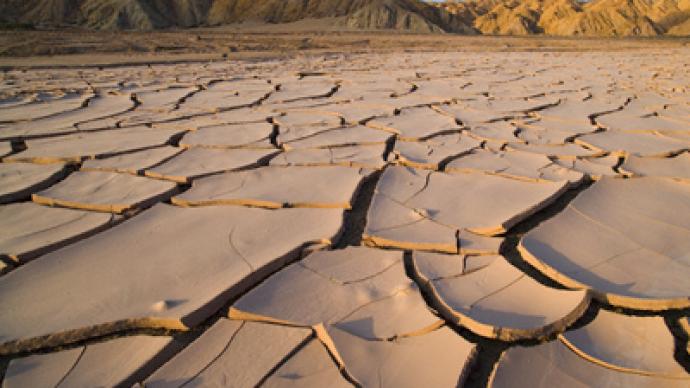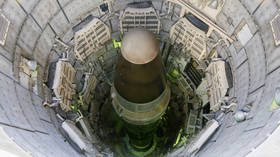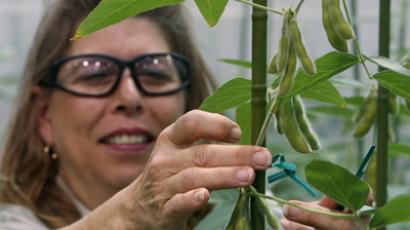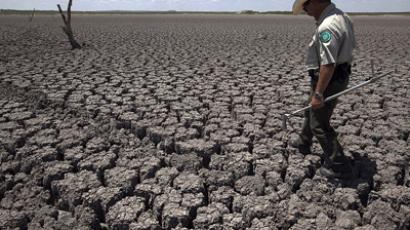Drought turns half of US into disaster areas

In the midst of one of the worst droughts in history, 218 counties were added to the US government’s list of natural disaster areas, putting nearly half of all counties in a state of agricultural catastrophe.
1,584 counties in 32 states are now designated primary disaster areas, according to the US Department of Agriculture. The department uses a weekly drought monitor to form its list. This week, the USDA found that nearly half of the nation’s corn crop and 37 percent of its soybean crop was rated “poor” or “very poor.”Three quarters of the country’s cattle are in areas affected by the drought.Counties that are considered a natural disaster area make its famers and ranchers eligible for federal aid, including low-interest emergency loans, the Associated Press reports.Additionally, afflicted ranchers have been given access to 3.8 million acres of conservation land to feed their animals and farmers are being paid to take land out of production to prevent erosion and create wildlife habitat.“The assistance announced today will help US livestock producers dealing with climbing feed prices, critical shortages of hay and deteriorating pasturelands,”said Agriculture Secretary Tom Vilsack.Farmers in disaster areas are also receiving a penalty-free, 30-day grace period on their premiums this year.“Responding to my request, crop insurance companies indicated that producers can forgo interest penalties to help our nation's farm families struggling with cash flow challenges,” Vilsack added.But in the midst of an already-struggling economy, some Americans are worried that food shortages and rising food prices will drive the country into another painful recession.A report by the Creighton University College of Business states that the US Midwest could fall into a recession. The report also states that nearly two-thirds of ethanol producers have stopped their operations of cut back due to a lack of corn, higher corn prices and lower oil prices.Additionally, confidence in the economy is at the lowest level since the recession, partly as a result of the drought.“While harvest has yet to begin, we already see that the drought has caused considerable crop damage,” said Illinois Gov. Pat Quinn, who governs a state where 71 percent of the corn crop is considered “poor” or “very poor.”And at a time when US export orders are dropping to the lowest level in three years, the drought’s impacts will be seen throughout the world.














